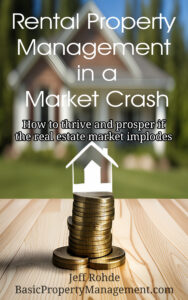Buy-and-hold real estate is one of the most popular investment strategies for building long-term wealth, attracting everyone from first-time investors to seasoned professionals. This strategy means you purchase rental properties and keep them for years to generate steady monthly income and benefit from property appreciation. Unlike house flipping or other short-term methods, buy-and-hold investing focuses on steady cash flow and gradual wealth growth.
Many investors like this approach because it creates ongoing income and offers tax benefits that you can use year after year. You can start with traditional rental properties, but today’s investors also have access to REITs that often outperform the stock market and other options that make real estate investing easier than ever.
If you want to replace your current income or simply add real estate to your investment portfolio, learning the basics of buy-and-hold real estate will help you make smart decisions for your financial future. The strategy offers multiple ways to succeed, from direct property ownership to technology-driven solutions that fit different budgets and time commitments.
Key Takeaways
- Buy-and-hold real estate creates income through rental payments while properties gain value over time
- You can invest through direct property ownership, REITs, or other strategies like syndications depending on your capital and how involved you want to be
- Success comes from knowing market basics, financing options, and using modern tools to boost returns while reducing hands-on management
Fundamentals of Buy-and-Hold Real Estate Investing
Buy-and-hold real estate investing means you acquire properties for extended periods to earn rental income and grow wealth through appreciation. This strategy works best when you know the core mechanics, recognize advantages over other approaches, and use smart risk management.
Definition and Core Principles
Buy-and-hold real estate investing means you purchase properties with the intention of keeping them for years while earning rental income. You buy residential or commercial properties, rent them to tenants, and benefit from monthly cash flow plus long-term appreciation.
This approach is a long-term investment where your main goal shifts from quick profits to steady wealth building. Unlike house flipping, you keep ownership for years or even decades.
Your success relies on three main elements:
- Cash flow generation from rental payments
- Property appreciation over time
- Tax advantages such as depreciation deductions
This approach is similar to income stock investing in the stock market. Just as dividend-paying stocks give regular payments and possible share price growth, rental properties provide monthly income and value increases.
Total return comes from both rental income and appreciation. For example, a property that brings in $500 a month and gains 3% in value each year provides returns from two income sources.
Key Benefits Over Other Investment Strategies
Buy-and-hold real estate has several advantages for people who want stable, long-term wealth growth.
Steady income generation is a major benefit. Monthly rental payments give you predictable cash flow that can boost your regular income or help you invest more. This income often rises each year with rent increases.
Inflation protection happens naturally as rental rates and property values usually rise with inflation. Your mortgage payment stays the same while rental income grows, which improves your profit margins over time.
Tax benefits include depreciation, mortgage interest write-offs, and property maintenance deductions. These can lower your taxable income from rental properties.
Leverage lets you control valuable assets with smaller down payments. For example, a 20% down payment on a $200,000 property gives you the chance to benefit from the entire property’s appreciation.
Portfolio diversification beyond stocks and bonds adds stability when markets are volatile. Real estate often performs differently than stocks, offering protection during economic downturns.
Risks and Mitigation Approaches
Buy-and-hold investing comes with specific risks, but you can manage them with careful planning and proactive strategies.
Vacancy risk means you lose rental income when properties sit empty but still have expenses. You can reduce this risk by setting competitive prices, making property improvements, and keeping emergency savings to cover 3-6 months of costs.
Property maintenance costs can cut into your profits through unexpected repairs and routine upkeep. Set aside 1-2% of your property’s value each year for maintenance and build relationships with trustworthy contractors.
Market fluctuations can affect property values and rental demand. Spread your investments across different neighborhoods or property types, and focus on areas with strong job growth and population increases.
Tenant-related challenges like late payments, property damage, and evictions can be costly. Screen tenants carefully, require security deposits, and consider hiring property management companies if you want less day-to-day involvement.
Interest rate changes can impact your financing costs and property values. Lock in good rates when you can and maintain strong credit for better loan terms.
Leveraging Buy-and-Hold With REITs and Modern Technology

Real Estate Investment Trusts give buy-and-hold investors access to professional property management and steady dividend yields without the need to manage properties themselves. AI-powered platforms now help investors quickly analyze market data and spot promising long-term opportunities.
REITs and Real Estate Investment Trusts
REITs are companies that own, operate, or finance income-producing real estate in different sectors. You can buy REIT shares on major stock exchanges just like regular stocks, giving you access to commercial properties without managing them yourself.
Residential REITs focus on apartments, single-family rentals, and manufactured housing. These trusts provide steady cash flow from tenant rent payments.
Industrial REITs own warehouses and distribution centers, while office REITs invest in corporate buildings and business parks in cities.
Key REIT advantages for buy-and-hold investors:
- Professional property management
- Diversified real estate exposure
- Lower capital requirements than direct ownership
- High liquidity through stock market trading
REITs have to distribute at least 90% of their taxable income as dividends, so you receive regular income that fits well with long-term buy-and-hold strategies.
Dividend Yield and Income Potential
High-yield REITs often pay dividend yields between 4% and 8%, which is much higher than most stock dividends or bonds. Your dividend income comes from the rent collected by the REIT’s properties.
Most REITs pay dividends every quarter. You can reinvest these cash payments to grow your returns or use them as current income.
FFO (Funds From Operations) gives a clearer picture of REIT performance than traditional earnings per share. FFO adds back depreciation and amortization to net income, showing how much cash the REIT actually generates.
Most quality REITs keep FFO payout ratios between 70% and 90%, which helps sustain dividends while leaving funds for property improvements and new purchases.
Monthly vs. Quarterly Dividend REITs:
- Monthly payers: Realty Income, STAG Industrial
- Quarterly payers: Most traditional REITs
Your total return includes both dividend income and possible share price growth as property values rise during your holding period.
The Role of Artificial Intelligence in Real Estate Investing
AI technology now helps you analyze real estate markets and find good buy-and-hold opportunities faster. Modern platforms use machine learning to process large amounts of property data, market trends, and economic indicators.
AI-powered analysis includes:
- Automated property valuation models
- Predictive rent growth forecasts
- Market cycle timing indicators
- Risk assessment algorithms
Real estate companies use AI to improve property management, lower vacancy rates, and boost rental income. These improvements help REIT shareholders through higher FFO and better dividends.
Major commercial real estate companies use AI tools for portfolio management, tenant screening, and maintenance scheduling. This technology helps them run properties more efficiently.
You can use AI-driven investment platforms to screen REITs based on dividend stability, growth prospects, and value. These tools make it easier to find opportunities that fit long-term buy-and-hold goals.
Good data is essential for AI to work well in real estate. Poor data can lead to inaccurate property values and bad investment choices.
Frequently Asked Questions
Buy-and-hold investors usually focus on cash flow, appreciation potential, and tax benefits when choosing properties. They look at rental income, location, and maintenance needs over the long term to pick investments that fit their goals.
What are the key advantages of the buy-and-hold strategy in real estate investing?
Buy-and-hold real estate gives you monthly rental income and long-term property appreciation. As tenants pay your mortgage principal each month, you build equity automatically. This strategy offers tax perks such as depreciation deductions, mortgage interest write-offs, and property tax deductions. These benefits lower your tax bill and boost your cash flow.
How does the buy-and-hold approach compare to other real estate investment strategies?
Buy-and-hold builds wealth over time through steady cash flow and appreciation, while house flipping focuses on quick profits and requires more active renovation work and higher transaction costs.
What are the typical time frames considered when investing in real estate using a buy-and-hold strategy?
Most buy-and-hold investors keep properties for at least five to ten years to get the most from appreciation. Shorter time frames might not let you recover transaction costs or ride out market changes.
Some investors hold properties for decades, letting appreciation and mortgage paydown build significant wealth over time. Long-term ownership also increases your tax benefits from depreciation.
Your personal financial goals and retirement plans should guide your holding period. Holding a property for more than a year qualifies you for lower capital gains taxes when you sell.
Market conditions can affect your timeline, but patience is important for buy-and-hold success. Long-term holders usually see rewards even if the market has short-term ups and downs.
What are the tax implications of a buy-and-hold real estate investment strategy?
Rental income is ordinary income subject to regular tax rates, but you can use depreciation deductions to offset much of this liability. You can depreciate residential rental properties over 27.5 years, which helps reduce taxable income.
You can deduct mortgage interest, property taxes, insurance premiums, and maintenance expenses from rental income. These deductions may create paper losses that can help reduce your overall tax bill.
If you hold properties for more than one year before selling, you qualify for long-term capital gains rates, which are usually lower than ordinary income tax rates. You can also use a 1031 exchange to defer capital gains taxes by reinvesting proceeds into similar properties.
When you sell, you may need to pay back some tax benefits through depreciation recapture, but timing your sale and reinvesting can help reduce this impact. Talking with a tax professional can help you make the most of available deductions for your situation.
Looking for deeply discounted properties others don’t know about?
Don’t miss out on the next great investment opportunity! Search millions of foreclosure listings and get daily alerts for new properties in your target market.

Are you a contrarian investor with the foresight to spot opportunities where others see only chaos?
Rental Property Management in a Market Crash is your essential guide to navigating turbulent economic waters. Learn how to capitalize on market downturns that inevitably occur, drawing parallels between the Global Financial Crisis of 2007-09 and current market conditions.
This book offers invaluable insights into the dynamics of the housing market during a downturn, equipping you with the knowledge to make informed decisions and build a resilient investment portfolio.
Don’t just weather the storm – learn to thrive in it. Get your copy now from your favorite bookseller:
- Amazon as an ebook
- Books2Read for Apple, Barnes & Noble, Kobo, Scribed, and 8 more sellers with both eBook and paperback options available
- Payhip as a downloadable PDF
Ready to take your business to the next level?
- Subscribe to our newsletter
- Visit the learning center
- Learn more about our consulting services



